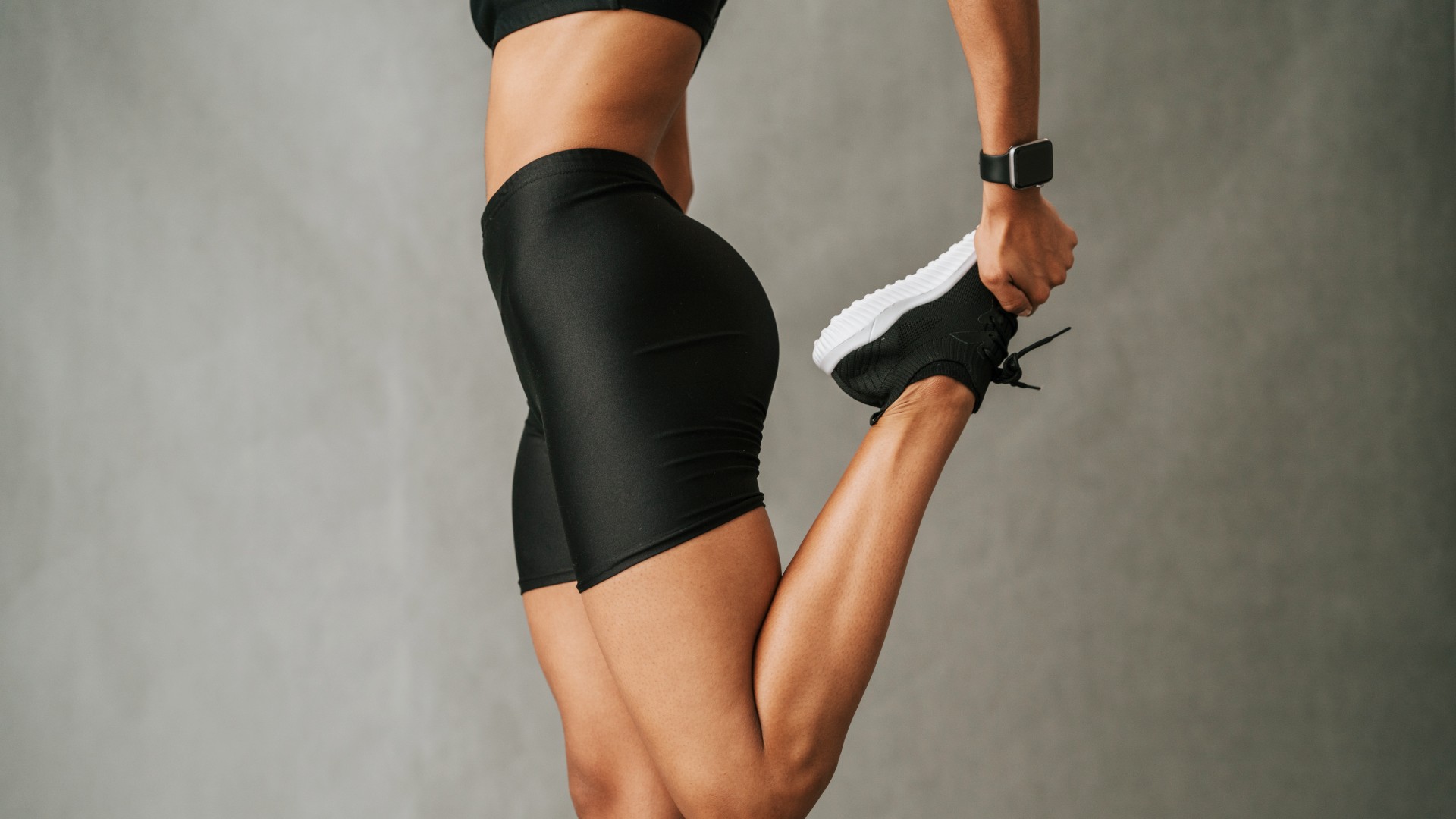
If you have tight hips and gluteal muscles, try this alternative take on the popular pigeon stretch to build lower body flexibility. Whether you sit for prolonged periods at a desk or are just not a fan of stretching routines or mobility exercises, this hip stretch can appeal to anyone.
It only takes one minute — 30 seconds per leg — to do, or you can perform the stretch longer if you enjoy it. The positioning of the pigeon pose is quite specific to avoid knee pain, so it’s off the table for many people rolling out one of the best yoga mats to exercise at home.
The 90-90 stretch is a lower body exercise and variation on pigeon considered more knee-friendly. It delivers a deep glute stretch, and I love using it in the mornings before workouts or evenings to help relieve my hips after a day at my desk.
If any client tells me they need to stretch lower body muscles but struggle with knee pain, I teach them 90-90. Here’s how to do it, plus some ways to adapt it. Suppose you’re dealing with an injury, knee or hip pain, sciatica symptoms, or returning to exercise for whatever reason. In that case, I strongly advise getting cleared medically by your physician before jumping into anything new.
What is the 90-90 stretch?
The 90-90 hip stretch builds flexibility and lower body mobility by targeting the muscles surrounding the pelvis, which are responsible for lifting, extending and externally rotating your hips and legs.
Unlike learning how to do pigeon pose (pictured below), which can easily put pressure on your knees if done wrong — not the easiest to detect if you don’t have a yoga teacher or fitness instructor on hand — 90-90 releases tension from your hip flexors and glutes and stretches the lower body with less strain on your knees.
What muscles does the 90-90 stretch target?
Your glutes, hip flexors and external rotators are mostly at play during the stretch. In the front leg, you’ll hopefully feel a deep glute and hip flexor stretch, whereas in the back leg, you’ll feel the stretch down the inner leg and external rotators. Together, these muscle groups are responsible for mobility, posture and maintaining a healthy lower back, and improving range of motion around your hips and glutes could also improve exercise performance.
How to do the 90-90 stretch
- Sit on your butt with both legs extended
- Bend your right knee and align your right heel with it
- Sweep your left leg back and bend the left knee to create a 90-degree shape, with your left knee aligned with your left hip
- Gently press down with the inner left leg
- Your right leg should be positioned in front of you and your left leg behind and slightly to the side
- Square your hips to the front of your mat and check that your right calf is parallel to your left thigh
- Sit tall through your spine and keep your spine neutral
- Hinge forward at your hips and lower your chest toward your right leg. Avoid rounding your spine
- Hold the stretch for at least 30 seconds, then switch legs.
If you find it difficult to maintain the position, work on some of these hip mobility exercises and stretches first and build up to it over time. You can stay sitting upright or fold forward for a deeper stretch.
Try to gently press your knees downward without forcing your legs. I recommend performing a quick checklist, ensuring your hips are square, your front knee and heel aligned, the hip and knee of the back leg are also aligned and your back ankle stays aligned with the same knee. Both legs should create a 90-degree shape.
Who should avoid the 90-90 stretch?
The 90-90 stretch should be safe for most people, but if you experience knee, hip, or lower back pain, or have an existing diagnosed injury, skip it until you've consulted a qualified medical professional.
Bringing your heels slightly closer to your body should relieve the intensity of the stretch and you can adjust your heel position at any time as your flexibility develops.







